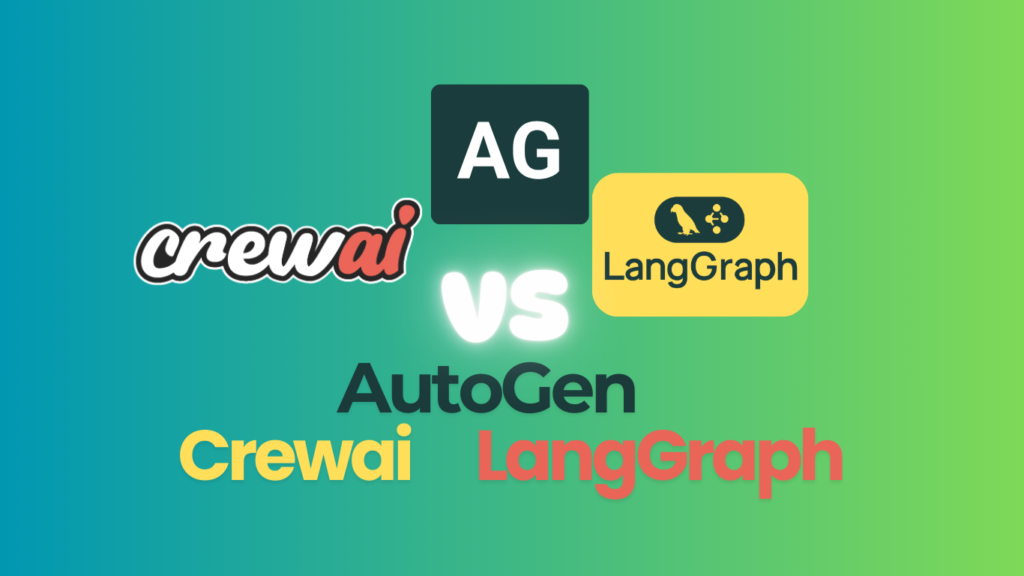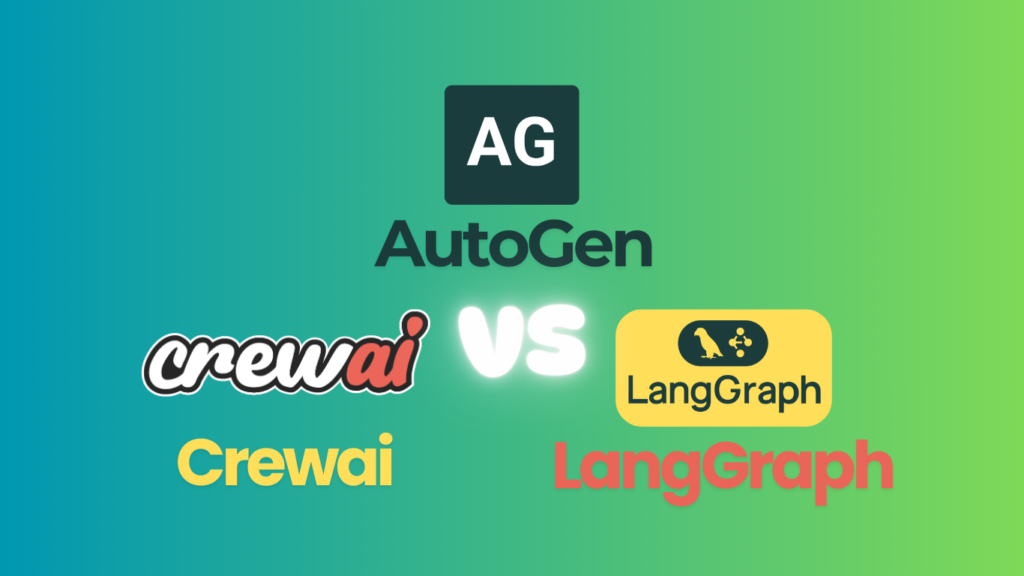The world of AI agent frameworks is evolving fast, with new tools emerging to help developers create intelligent, autonomous agents. If you’re working on AI-powered applications, you’ve probably come across CrewAI, AutoGen, and LangGraph—three powerful frameworks designed for different kinds of AI workflows. But which one should you choose?
Let’s break down the differences, pros, and cons of each framework in a clear, easy-to-understand way—so you can pick the best tool for your needs!

Understanding AI Agent Frameworks
Before diving into the comparison, let’s get a quick overview of what these frameworks actually do.
- AI Agent Frameworks help developers build AI-driven applications that can autonomously perform tasks, interact with users, and work together in teams.
- They manage workflows, memory, and decision-making, making it easier to develop multi-agent systems without writing everything from scratch.
What Are CrewAI, AutoGen, and LangGraph?
1. LangGraph
- Created by LangChain, LangGraph is built for complex, multi-actor applications.
- It uses a graph-based approach (like a flowchart) to define how AI agents interact.
- Best for structured workflows where you need to control each step carefully.
2. AutoGen
- Developed by Microsoft, AutoGen is designed for conversational AI workflows.
- Think of it like chat-based AI development, where agents communicate like human users.
- Great for tasks that involve dynamic conversations and function calling.
3. CrewAI
- CrewAI is all about teamwork—it helps you create multiple AI agents that work together to complete a goal.
- Each agent has a specific role (e.g., researcher, writer, coder) and collaborates to get things done.
- Perfect for multi-agent research teams and collaborative AI applications.
Feature Comparison: LangGraph vs. AutoGen vs. CrewAI
Now that we know what each framework is about, let’s compare them side by side.
| Feature | LangGraph 🛠️ | AutoGen 💬 | CrewAI 🤖 |
|---|---|---|---|
| Best For | Complex workflows, structured AI processes | Conversational AI, interactive chatbots | Multi-agent collaboration, AI teamwork |
| How It Works | Uses graphs (DAGs) to define AI flows | Works like a chatbot with multi-agent convos | Agents take specific roles & collaborate |
| Ease of Use | Harder (Requires DAG knowledge) | Easier (Natural conversation flow) | Easy (Role-based agent management) |
| Multi-Agent Support | ✅ Yes (Graph-based) | ⚠️ Limited (Conversational) | ✅ Yes (Designed for teamwork) |
| Customization | ✅ Highly customizable (Define flows in detail) | ✅ Modular, extendable | ✅ Custom roles, tasks, and tools |
| Memory Handling | ✅ Advanced (Short-term, long-term, entity memory) | ✅ Good (Context-aware conversations) | ✅ Strong memory system |
| Scalability | ✅ Very scalable for complex AI workflows | ✅ Scales well for chat-based AI | ✅ Excellent for multi-agent teamwork |
| Replay Capabilities | ✅ Yes (“Time travel” debugging) | ❌ No explicit replay feature | ✅ Yes (Replay from last task) |
| Tool Integration | ✅ Seamless with LangChain tools | ✅ Supports function calling, code execution | ✅ Uses LangChain & custom tools |
Pros & Cons of Each AI Framework
Every framework has strengths and weaknesses, depending on your project.
🚀 LangGraph: Best for Complex AI Workflows
✔️ Pros:
- Great for structured applications where you need precise control.
- Supports advanced memory (short-term, long-term, and entity-based).
- Seamless integration with LangChain tools.
- “Time travel” feature for debugging and workflow optimization.
❌ Cons:
- Steep learning curve (requires understanding graphs/DAGs).
- Not ideal for conversational AI (more focused on structured workflows).
💬 AutoGen: Best for Chat-Based AI Agents
✔️ Pros:
- Very intuitive if you’re used to chatbot-based AI development.
- Easier to set up than LangGraph.
- Great for interactive applications that involve conversations.
❌ Cons:
- Limited multi-agent support (agents interact through chat, not structured workflows).
- No built-in replay feature (less control over debugging and workflow analysis).
🤖 CrewAI: Best for AI Teams & Collaboration
✔️ Pros:
- Perfect for multi-agent collaboration (agents work as a team).
- Role-based system makes it easy to structure agent responsibilities.
- Highly customizable (define tools, roles, and tasks).
❌ Cons:
- Still evolving (some features are being improved).
- Not ideal for single-agent tasks (better suited for teamwork-based AI).
Which AI Agent Framework Should You Use?
It depends on what you’re building! Here’s a quick guide to help you decide:
✅ Use LangGraph if…
- You need precise control over workflows.
- Your AI project has complex, multi-step processes.
- You want advanced memory and debugging features.
✅ Use AutoGen if…
- You’re building a chat-based AI system.
- Your agents need to interact dynamically via conversations.
- You prefer a simpler, more natural approach to AI development.
✅ Use CrewAI if…
- You need multiple AI agents working together.
- Your project requires clear roles & teamwork.
- You want a structured, role-based AI system.
Final Thoughts
AI agent frameworks like LangGraph, AutoGen, and CrewAI are transforming the way we build AI-powered applications. Each tool offers unique advantages, and the best choice depends on your specific needs.
- LangGraph is for structured workflows.
- AutoGen is for conversational AI.
- CrewAI is for multi-agent collaboration.
No matter which one you choose, these frameworks will help you build smarter, more efficient AI applications. 🚀


